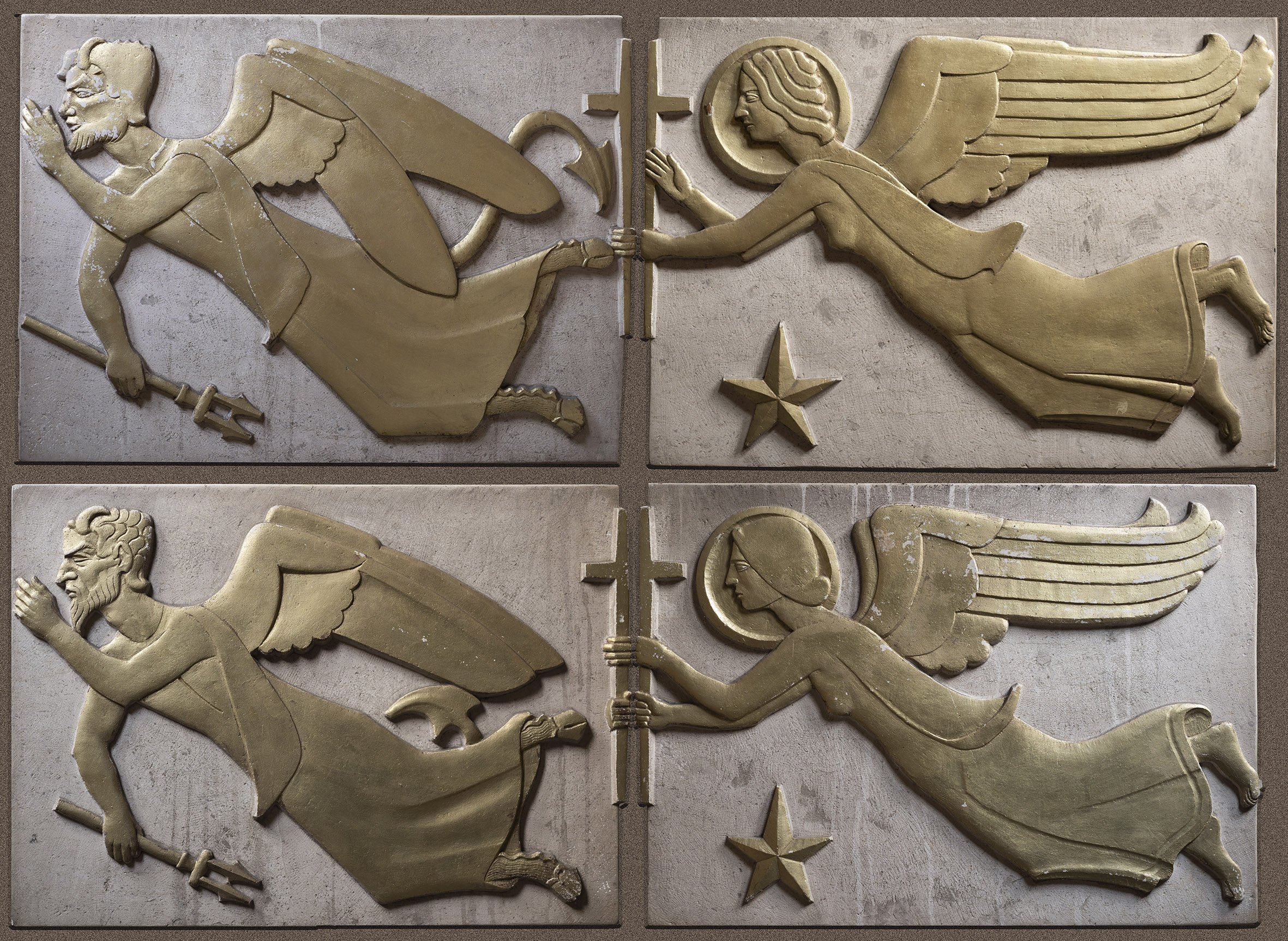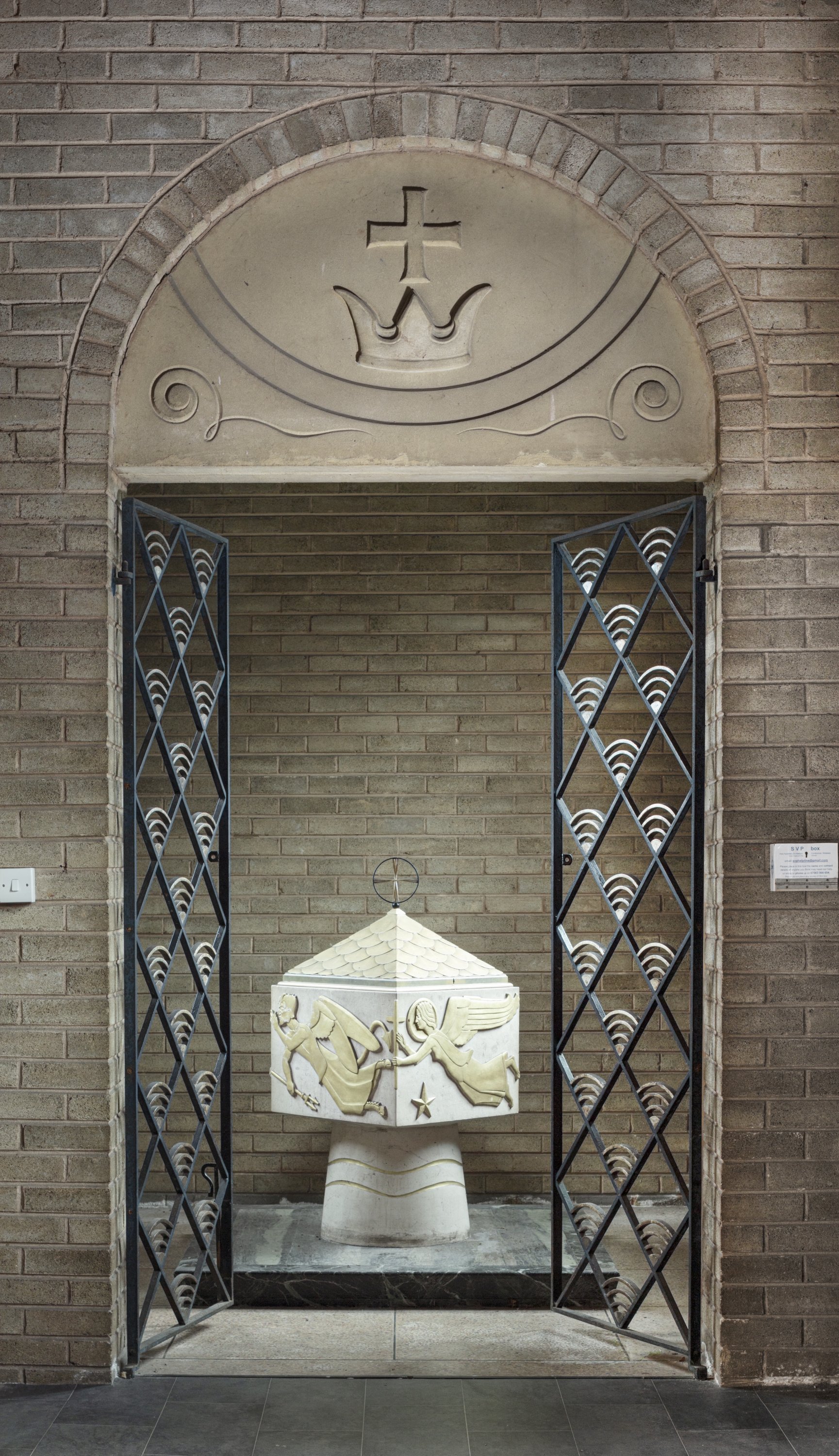F X Velarde and Herbert Tyson Smith: Baptismal font


Title: Baptismal font
Location: Holy Apostles and English Martyrs, Wallasey (RC)
Artist: F X Velarde (1897–1960) and Herbert Tyson Smith (1883–1972)
Date: 1953
Nominated by Dominic Wilkinson, Principal Lecturer in Architecture at Liverpool John Moores University: ‘The opening of English Martyrs RC church in 1953 marked the completion of F X Velarde’s (1897–1960) most ambitious post-war building. An expressionist brick basilica filled with colour and decorative elements; not added but embedded as intrinsic aspects of the architecture. As with all Velarde’s churches the detail was tightly controlled, work with artists being a collaboration. The most successful and longest of these collaborations was with the sculptor Herbert Tyson Smith (1883–1972). A perfect example of this working partnership is the baptismal font at English Martyrs RC church, Wallasey. Designed by Velarde and carved by Tyson Smith, this is a square stone block set at 45 degrees on a stone pillar, with integral cover. On the face of the stone cube are carved bas relief angels chasing out the devil. These stylised figures with their outstretched wings were typical of the work of both artist and architect and appear in many churches by the pair. The cover is a shallow pyramid, decorated in fish scales topped by a gold cross. Gold, used to highlight the figures, was, like the angels themselves, a favourite treatment for Velarde, who loved its lustre. The font, in its original baptistry adjacent to the church entrance, was designed to attract the attention of parishioners and remind them of the importance of the transition into the church community. Its effect was emphasized by light from the windows falling on the scales and glinting on the gold trim. A celebration of entry in every sense.’
Francis Xavier Velarde (1897–1960) was born and worked in Liverpool. Having first joined the Merchant Navy, he enlisted in 1916, suffering war injuries that would affect him throughout his life. He enrolled at the Liverpool School of Art but was poached by Charles Reilly, head of the School of Architecture, who was later a great supporter. It was with Reilly that Velarde first visited Germany in the late 1920s, encountering the brick Expressionist churches which were a significant influence on his own style. Velarde’s churches, many in Liverpool and the Wirral, and almost all for the Catholic Church, are colourful and idiosyncratic, marrying massy brickwork and thoughtful, elegant decoration. He worked in close collaboration with artists – the sculptors Herbert Tyson Smith and later David John – on furniture and fittings. Velarde received an OBE in 1957 and died in 1960; several of his churches have been neglected or demolished.
(George) Herbert Tyson Smith (1883–1972) was born in Liverpool, a city marked by his sculptures, which decorate schools, pubs, banks, and, with a scheme of playful sea creatures and mermen, the former Littlewoods department store in Church Street. His major work was in war memorials, including reliefs for the Liverpool Cenotaph and Birkenhead War Memorial and a memorial for Liverpool Post Office. His partnership with Velarde began in the 1920s, at the very beginning of the latter’s career, lasting until the 1950s, with Tyson Smith’s carved angels on altars, fonts, and the monumental east (liturgical west) façade of St Monica’s, Bootle.
Further Information
Medium: Stone, gold leaf
Permanent display
See Velarde and Tyson Smith’s Baptismal font on the Ecclesiart map here.
Other artworks in churches by Herbert Tyson Smith and F X Velarde: three angels, altar, St Monica’s, Bootle; altar, St Matthew’s, Clubmoor, Liverpool.

